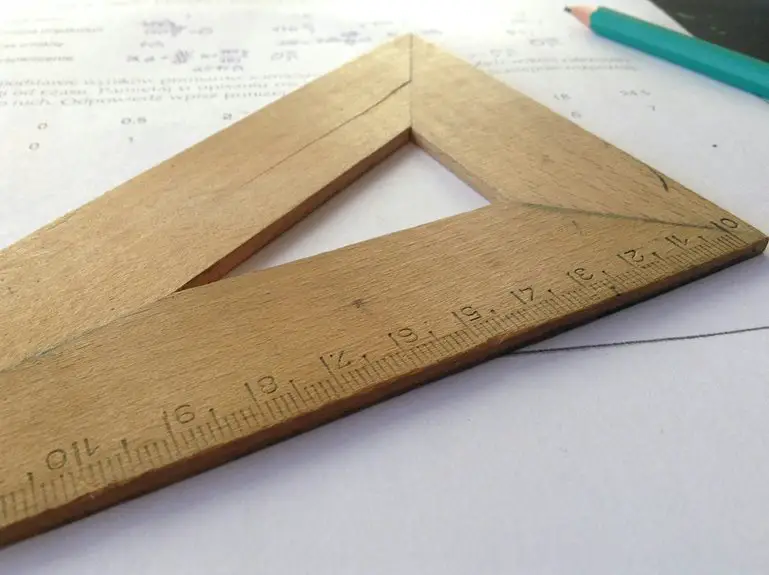You rely on Kevlar stab-proof fabric because it meets strict standards like NIJ and HOSDB, ensuring reliable protection against sharp threats. Kevlar’s unique fiber structure absorbs and disperses stabbing force, while rigorous testing methods—such as drop tower and puncture tests—confirm its durability and effectiveness. It outperforms many materials in real-world scenarios but has limits under extreme conditions. Discover how innovations and practical tips can help you choose the best Kevlar protection for your needs.
Table of Contents
Key Takeaways
- Kevlar stab-proof fabrics are tested under NIJ Standard 0115.00 and HOSDB for certified stab resistance performance.
- Testing methods include drop tower, manual stab, and puncture force assessments to simulate real-world attack scenarios.
- Real-world testing evaluates multi-impact durability, flexibility, and resistance to various blade types and forces.
- Certification ensures Kevlar products meet rigorous safety standards for law enforcement and civilian protection.
- Continuous innovation and advanced weaving enhance Kevlar’s stab resistance while maintaining comfort and wearability.
Understanding Kevlar and Its Properties
Although you might already know Kevlar as a strong material used in protective gear, understanding its unique properties reveals why it’s so effective.
Kevlar is a synthetic fiber known for its exceptional tensile strength-to-weight ratio, meaning it’s incredibly strong yet lightweight. When you handle Kevlar, you’ll notice it’s flexible but doesn’t easily stretch or break.
Kevlar combines remarkable strength with lightness, offering flexibility without stretching or breaking easily.
Its molecular structure, with tightly woven polymer chains, provides resistance to impact and abrasion. Plus, Kevlar resists heat and chemical damage, keeping its integrity under tough conditions.
You’ll find it used not only in body armor but also in helmets, ropes, and even tires. By appreciating these properties, you can better understand why Kevlar is a top choice in protective fabrics.
How Kevlar Provides Stab Resistance
You’ll see Kevlar’s unique fiber structure plays a key role in stopping stab threats by distributing force across its layers.
When you apply pressure, Kevlar absorbs and disperses energy, preventing blades from penetrating.
Let’s explore how this combination makes Kevlar so effective against stabbing attacks.
Kevlar Fiber Structure
The unique molecular arrangement of Kevlar fibers gives them exceptional strength and flexibility, which directly contributes to their stab-resistant properties. You’ll find that Kevlar’s long, rigid polymer chains align parallel to each other, creating strong hydrogen bonds. This structure forms tightly packed crystalline regions, enhancing durability against penetration. When you examine the fiber, the balance of strength and flexibility lets it absorb and distribute force without breaking.
| Feature | Description | Impact on Stab Resistance |
|---|---|---|
| Polymer Chains | Long, aligned molecules | High tensile strength |
| Hydrogen Bonds | Strong intermolecular forces | Structural rigidity |
| Crystalline Regions | Densely packed fibers | Prevents blade penetration |
This precise fiber architecture is why Kevlar outperforms many other materials in stab resistance.
Energy Absorption Mechanism
Because Kevlar fibers efficiently absorb and disperse energy from sharp impacts, they prevent blades from penetrating the fabric. When a stabbing force hits Kevlar, the energy doesn’t just focus on one point—it spreads out across many fibers, reducing the chance of a cut or puncture. You can think of it like a web catching a falling object; the force distributes evenly.
Here’s how Kevlar manages this:
- Fibers align tightly, creating a dense, interwoven network
- High tensile strength fibers stretch slightly, absorbing impact energy
- Multiple layers work together to disperse force across a wide area
- Fibers deform and resist cutting, preventing blade penetration
This energy absorption mechanism makes Kevlar highly effective in stab-resistant gear you can rely on.
Key Industry Standards for Stab-Proof Fabrics
Although stab-proof fabrics like Kevlar offer impressive protection, you need to understand the industry standards that define their effectiveness. These standards guarantee the materials meet specific criteria for stab resistance, durability, and performance under different conditions. Familiarizing yourself with these helps you make informed choices when selecting stab-proof gear.
| Standard | Description |
|---|---|
| NIJ Standard 0115.00 | Defines testing for stab resistance in body armor |
| HOSDB | UK’s Home Office Scientific Development Branch standard |
| ASTM F1342 | Measures puncture resistance of protective clothing |
| EN 388 | European standard for protective gloves including cut resistance |
Knowing these standards helps you verify that Kevlar fabrics will perform as expected in real-world situations.
Testing Methods for Kevlar Stab Resistance
Many rigorous testing methods assess Kevlar’s stab resistance to guarantee it meets safety standards.
When you evaluate Kevlar fabric, you’ll encounter several key tests designed to simulate real-world threats and measure protective performance.
These tests include:
- Drop tower tests: Dropping a weighted blade onto the fabric to gauge penetration resistance.
- Manual stab tests: Experts use controlled stabbing motions with knives to assess durability.
- Puncture force measurements: Instruments quantify the force needed to pierce the material.
- Multi-impact evaluations: Repeated strikes on the same area check for sustained protection.
Comparative Performance of Kevlar Against Other Materials
You’ll want to see how Kevlar stacks up against other materials in impact resistance and durability under stress.
Comparing weight versus protection is key to understanding why Kevlar often stands out.
Let’s explore these factors to help you make an informed choice.
Impact Resistance Comparison
When you compare Kevlar to other materials, its impact resistance stands out due to its unique molecular structure. This structure allows it to absorb and disperse energy efficiently, making it ideal for stab-proof applications.
Here’s how Kevlar stacks up against common alternatives:
- Steel plates: Heavy and rigid but less flexible, causing discomfort.
- Polycarbonate: Offers good impact resistance but lacks the tensile strength Kevlar provides.
- Dyneema: Lighter than Kevlar but generally less heat resistant.
- Carbon fiber: Strong but brittle, prone to cracking under sharp impacts.
Kevlar’s balance of strength, flexibility, and energy dispersion makes it superior when you need reliable impact protection without sacrificing mobility.
This is why you’ll often find Kevlar favored in protective gear where both safety and comfort matter.
Durability Under Stress
Kevlar’s ability to absorb and disperse energy doesn’t just enhance impact resistance; it also plays a key role in how the material holds up over time under repeated stress.
When you compare Kevlar to other fabrics like nylon or polyester, you’ll notice Kevlar maintains its structural integrity far better after multiple impacts or abrasions. It resists fraying and degradation, which means the protection it offers won’t greatly diminish even after extended use.
Unlike some materials that weaken or become brittle, Kevlar’s molecular structure keeps it flexible yet tough.
Weight Versus Protection
Although some materials offer lightweight options, you won’t find many that balance weight and protection as effectively as Kevlar. When you compare Kevlar to alternatives like steel mesh or polyethylene fibers, its advantage becomes clear.
Kevlar provides sturdy stab resistance without adding bulk, letting you move freely while staying protected. You’ll notice:
- Kevlar is considerably lighter than steel-based fabrics
- It maintains flexibility, unlike rigid composites
- Polyethylene fibers may be lighter but often sacrifice durability
- Kevlar’s layered weave absorbs and disperses energy efficiently
This balance matters when you need reliable protection that won’t weigh you down.
Whether for body armor or protective gear, Kevlar’s proven performance keeps you safer without compromising comfort or mobility.
Real-World Applications of Kevlar Stab-Proof Gear
Stab-proof gear made from Kevlar plays an essential role in protecting individuals exposed to sharp weapons in dangerous environments. Whether you’re a police officer, security personnel, or working in corrections, Kevlar gear offers critical defense against stabbing attacks. You’ll find it in vests, gloves, and even helmets designed to absorb and disperse the force of blades. When you wear this gear, you’re not just shielding your body—you’re safeguarding your life and peace of mind.
| Role | Protection Benefit |
|---|---|
| Police Officer | Enhanced frontline safety |
| Security Guard | Confidence in hostile zones |
| Corrections Worker | Defense in high-risk cells |
| Emergency Responder | Protection during rescues |
| Civilians | Personal safety in threats |
Limitations and Challenges of Kevlar Stab Protection
While Kevlar gear provides valuable protection in many situations, it’s important to recognize its limits. You can’t rely on it to stop every threat or under all conditions.
Here are some key challenges you should keep in mind:
- Penetration by sharp or heavy blades: Some knives or weapons can still pierce Kevlar if force or angle is extreme.
- Limited flexibility: Stab-proof layers may reduce your mobility or comfort during extended use.
- Degradation over time: Exposure to moisture, UV light, or chemicals can weaken Kevlar fibers.
- Weight and bulk: Adding stab protection often increases the gear’s weight, which can cause fatigue.
Understanding these limitations helps you choose the right protection and stay realistic about what Kevlar can do for you.
Innovations Improving Kevlar Stab-Proof Technology
As threats evolve, manufacturers have pushed the boundaries of Kevlar technology to offer you better protection without sacrificing comfort or mobility. Innovations now include hybrid fabrics, advanced weaving techniques, and lightweight coatings to enhance stab resistance while keeping gear flexible. You’ll notice improved durability and breathability in newer stab-proof materials, making them easier to wear for long periods.
| Innovation | Benefit |
|---|---|
| Hybrid Fabrics | Combines Kevlar with other fibers for enhanced strength |
| Advanced Weaving | Creates tighter, more protective fabric structures |
| Lightweight Coatings | Adds stab resistance without extra bulk |
These advancements help you stay safer with gear that fits your active lifestyle, adapting to evolving threats effectively.
Practical Tips for Choosing Kevlar Stab-Resistant Products
With innovations making Kevlar stab-resistant fabrics stronger and more comfortable, knowing what to look for when selecting your gear becomes even more important.
You want protection without sacrificing mobility or comfort. Here are practical tips to guide your choice:
- Check Certification: Verify products meet recognized standards like NIJ or HOSDB for reliable protection.
- Assess Fit and Comfort: Try gear on to confirm it fits well and won’t restrict movement during use.
- Consider Layering: Look for products that allow layering for added protection and adaptability.
- Evaluate Durability: Choose materials and construction that withstand everyday wear and tear.
Frequently Asked Questions
Can Kevlar Stab-Proof Fabric Be Washed Without Losing Protection?
Imagine you washed your Kevlar vest after a messy spill. You can’t just toss it in the machine; you need gentle hand washing with mild detergent to keep its stab resistance intact and avoid damaging the fibers.
How Long Does Kevlar Stab-Proof Gear Typically Last?
You can expect your Kevlar stab-proof gear to last around 5 to 7 years with proper care. However, frequent use or damage can reduce its effectiveness, so always inspect it regularly and replace it if needed.
Is Kevlar Stab-Proof Fabric Environmentally Friendly?
You’ll find Kevlar isn’t very eco-friendly since it’s petroleum-based and non-biodegradable. However, some manufacturers are exploring recycling options and greener production methods to reduce environmental impact, so it’s slowly improving.
Can Kevlar Stab-Proof Clothing Be Customized for Style?
You can definitely customize stab-proof clothing for style. Manufacturers often offer various colors, cuts, and designs, so you don’t have to sacrifice safety for fashion. Just make sure the protective features stay intact during customization.
Does Kevlar Stab-Proof Gear Protect Against Blunt Force Trauma?
Kevlar stab-proof gear mainly stops sharp objects but doesn’t fully protect you from blunt force trauma. You’ll still feel impacts, so combining it with padding or trauma plates helps reduce injury from heavy blows or strikes.
- How Long to Leave in L’Oreal Hair Dye for Best Results - July 13, 2025
- Best Techniques for Dyeing Your Hair at Home - July 13, 2025
- How Dyes Are Used to Increase Contrast in Microscopy - July 13, 2025







